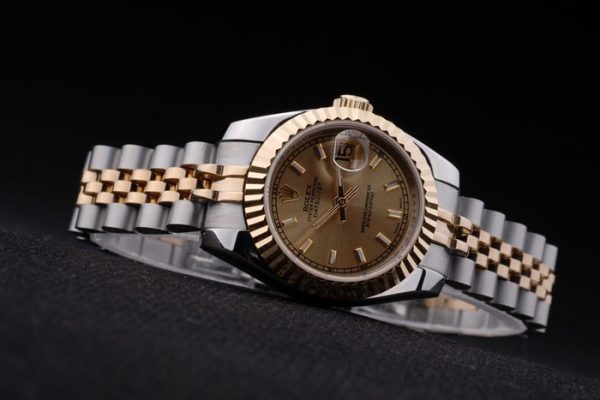Most watches are made of stainless steel, especially 316L stainless steel. This alloy is particularly corrosion-resistant due to its higher molybdenum content than other alloys. Other benefits of this material are its non-magnetic and tensile properties. It is, however, a relatively soft material. It can gather scratches and dents when worn with a watch, even under careful use. 
In fact, it has an oxide layer on its surface that can be scratched very easily. So while titanium watches look like scratch magnets, the material wears significantly less than 316 L. If you’re only concerned with the longevity of your copy watch, not its aesthetics, titanium is the better choice.
However, stainless steel is also tough enough. Just look at a 70-year-old watch. The lamellas in the strap may be worn, and yes, the case may be scratched and dented badly, but the material still holds up. It retains its overall shape and function. Thus, stainless steel is very much a part of watchmaking, but it does show its age on the surface.
Until the early 1960s, watches were equipped with radium luminescence for nighttime readability. From the early 1960s to the late 1990s, tritium was used. These luminescent compounds show significant ageing effects, including the fact that the luminescence diminishes over time. The colour of this material may also turn beige, orange, brown, or even black. Lume, then, is very unstable and prone to ageing.
Then there is the surface treatment of stainless steel. Brands like Sinn and Damasko are known for this. There are several ways to do this, but the result is an outer layer of about 5-25 microns that can be hardened to 2000 Vickers. I believe that other brands are experimenting with this technique as well. You can take a knife to these cases and it won’t leave any marks. Well, okay, it might leave one on the knife.
It’s important to realize that these materials are scratch-resistant, not scratch-proof. For example, the sapphire crystal in your modern watch has about 2,500 Vicks. Some of you would still be surprised to find scratches on your replica watches.
We are moving towards watches that are frozen in time. They are always designed to look brand new. Of course, how you feel about this is personal. You may like your watch always to look new or lament that it doesn’t collect battle scars and patina as you go along.
One thing is for sure: if watch brands have their way, ageing will soon be a thing of the past. If you want that vintage look, you have to invest in the effect from the start. We lost a lot of romance in the process, but I’ve figured it out now.